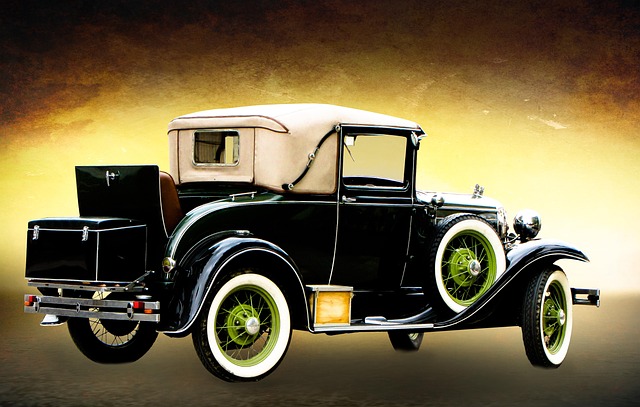Mercedes OEM Parts Replacement: Key to Long-Term Vehicle Reliability
Using genuine Mercedes OEM parts replacement is crucial for maintaining your vehicle's reliabil…….
In the fast-paced world of automotive engineering, ensuring vehicle performance, safety, and longevity is paramount. Mercedes OEM (Original Equipment Manufacturer) parts replacement has emerged as a transformative process, reshaping how we maintain and upgrade vehicles. This article delves into the intricate world of Mercedes OEM parts, exploring their definition, global impact, economic implications, technological innovations, regulatory landscape, challenges, and the inspiring case studies that highlight its potential. By examining these aspects, we uncover the significance of this practice in the automotive industry and its broader influence on manufacturing, sustainability, and consumer experiences.
Definition: Mercedes OEM parts replacement refers to the process of installing original manufacturer-specified parts to restore or enhance a vehicle’s performance, functionality, and durability. These parts are designed and produced by the same manufacturer as the original equipment, ensuring precise compatibility and quality control.
At its core, this practice involves several key components:
Original Equipment (OE) Parts: These are the authentic parts manufactured by Mercedes-Benz or their authorized suppliers, designed to meet the specific technical specifications of each vehicle model. OE parts include everything from engines and transmissions to interior components and exterior trim.
Replacement and Upgrading: The core act of replacement involves swapping out worn, damaged, or outdated parts with new OEM counterparts. Upgrading, on the other hand, entails installing parts that offer enhanced performance, efficiency, or additional features compared to the original equipment.
Precision Engineering: Mercedes OEM parts are renowned for their meticulous engineering and precision manufacturing. Each part is meticulously designed and tested to fit seamlessly into a vehicle’s existing infrastructure, ensuring optimal performance and reliability.
Historical Context: The concept of OEM parts replacement has been evolving since the early days of the automotive industry. As vehicles became more complex and sophisticated, the need for specialized, high-quality replacement parts grew. Mercedes-Benz, known for its engineering excellence, has played a pivotal role in shaping this process through consistent innovation and quality standards. Over time, the availability of OEM parts has improved, enabling more efficient repairs, better vehicle longevity, and enhanced customer satisfaction.
Mercedes OEM parts replacement has left an indelible mark on the global automotive landscape, with its influence extending across borders and continents:
International Market Penetration: The demand for Mercedes OEM parts is not limited to Germany or Europe; it has reached a global scale. Auto manufacturers worldwide recognize the value of using authentic OE parts to ensure vehicle performance and maintain brand reputation. For example, in North America, many dealerships and independent repair shops prioritize using OEM parts for their high-quality standards and compatibility with stringent safety regulations.
Regional Variations: Different regions have unique dynamics when it comes to Mercedes OEM parts replacement:
Global Supply Chain Network: The global impact extends to the supply chain, with complex networks established to ensure the timely delivery of OE parts worldwide. Mercedes-Benz has invested in robust distribution channels, allowing them to serve customers across all continents efficiently. This network includes state-of-the-art warehouses, advanced logistics systems, and strategic partnerships with local suppliers.
The economic aspects of Mercedes OEM parts replacement are multifaceted, impacting various sectors:
| Aspect | Description |
|---|---|
| Market Dynamics | The global market for OE automotive parts is highly competitive, with a mix of original equipment manufacturers (OEMs), tier-one suppliers, and aftermarket distributors. While some regions have a dominant presence by major automakers, other areas see the rise of specialized aftermarket part suppliers catering to niche demands. |
| Investment Patterns | Mercedes-Benz and other auto manufacturers invest heavily in research and development (R&D) to create innovative OE parts. These investments drive technological advancements, improve vehicle efficiency, and enhance safety standards. Additionally, dealers and repair shops allocate resources to ensure their technicians are trained to handle the latest part installations. |
| Economic Impact | The industry’s economic clout is significant. According to a 2022 report by MarketWatch, the global automotive parts market is projected to reach $1.7 trillion by 2027, with OE parts accounting for a substantial share. This growth is driven by rising vehicle sales, technological advancements, and the need for reliable repairs. |
| Cost-Benefit Analysis | Using Mercedes OEM parts offers several economic benefits: |
Mercedes OEM parts replacement has been a catalyst for technological innovation:
Digitalization and Data Integration: The digital age has transformed the way OE parts are designed, manufactured, and distributed. Mercedes-Benz leverages advanced software tools for computer-aided design (CAD), simulation, and testing. This enables engineers to create complex components with precision and efficiency. Additionally, data analytics plays a crucial role in optimizing supply chains, predicting part wear and tear, and enhancing customer service through personalized parts recommendations.
Advanced Materials: Researchers are constantly exploring new materials to improve OE parts’ performance and sustainability. For instance, lightweight composite materials like carbon fiber reinforce plastic (CFRP) are being integrated into vehicle structures and components, reducing weight and increasing fuel efficiency. Additionally, advanced metal alloys enhance durability and heat dissipation in high-performance parts.
Smart and Connected Vehicles: The rise of electric vehicles (EVs) and smart technology has led to the development of intelligent OE parts. These parts can communicate with other vehicle systems, providing real-time data for diagnostics and performance optimization. For example, Mercedes’ EQS electric sedan features advanced driver assistance systems (ADAS) that rely on sophisticated sensors and control units, all manufactured as original equipment.
The regulatory landscape surrounding Mercedes OEM parts replacement is vital to ensuring safety, environmental standards, and consumer protection:
Safety Regulations: Strict safety standards govern the manufacturing and use of OE parts worldwide. In Europe, regulations like ECE (Economic Commission for Europe) directives set guidelines for vehicle components, including those related to structural integrity, lighting, and emissions control. Similar standards exist in North America, such as FMVSS (Federal Motor Vehicle Safety Standards), ensuring that imported OE parts meet these stringent requirements.
Environmental Compliance: The automotive industry is under increasing pressure to reduce its environmental footprint. Regulations like the Euro 6 emission standards in Europe and similar initiatives globally drive the development of cleaner, more efficient OE parts. Mercedes-Benz has committed to aggressive sustainability goals, including using sustainable materials and reducing carbon emissions throughout their supply chain.
Intellectual Property Rights: Protecting intellectual property (IP) is critical for automakers and suppliers. Patents and copyrights ensure that original designs and technologies are safeguarded, promoting fair competition and innovation. The German government, as well as international bodies, have robust IP protection frameworks in place to support the automotive industry.
Despite its numerous benefits, Mercedes OEM parts replacement faces certain challenges and criticisms:
Cost: One of the primary concerns is the high cost associated with genuine OE parts. This can be a barrier for consumers, especially those in price-sensitive markets or with limited financial resources. Aftermarket parts often offer more affordable alternatives, but they may not provide the same level of quality and performance assurance.
Supply Chain Disruptions: Global supply chains are vulnerable to disruptions, such as geopolitical tensions, natural disasters, or pandemics. These events can lead to delays in OE part production and delivery, impacting vehicle availability and repair timelines.
Environmental Concerns: While the industry strives for sustainability, some critics argue that the focus on OE parts may inadvertently contribute to environmental issues. The energy-intensive manufacturing processes and global transportation of parts have raised concerns about their carbon footprint. However, advancements in material science and efficient logistics are addressing these challenges.
Strategies for Overcoming Challenges:
Price Transparency and Alternatives: Auto manufacturers can improve transparency by providing detailed pricing information for OE parts. Additionally, offering a range of options, including cost-effective genuine alternatives or high-performance aftermarket parts, allows consumers to make informed choices based on their needs and budgets.
Robust Supply Chain Management: Investing in resilient supply chain infrastructure is crucial. This includes diversifying supplier networks, implementing advanced inventory management systems, and developing contingency plans for disruptions.
Sustainable Practices: The industry must continue its efforts to reduce the environmental impact of OE parts manufacturing. Adopting eco-friendly materials, improving recycling processes, and optimizing logistics can contribute to a greener automotive ecosystem.
Several case studies illustrate the successful implementation of Mercedes OEM parts replacement, highlighting its transformative potential:
Case Study 1: Mercedes-Benz’s EQC Electric SUV
Mercedes-Benz introduced the EQC, an all-electric SUV, to meet the growing demand for sustainable transportation. The vehicle features a sophisticated drivetrain and battery system, both manufactured as original equipment. By using OE parts, Mercedes ensured optimal performance, extended battery life, and reduced maintenance concerns for customers. This case study showcases how OEM parts replacement can drive the adoption of new technologies while maintaining brand reputation and customer satisfaction.
Case Study 2: Aftermarket Upgrade Success in North America
In the United States, a leading aftermarket supplier collaborated with a major auto repair chain to offer premium upgrade packages for older Mercedes models. These packages included high-performance OE-spec engines, suspension systems, and advanced driver assistance systems (ADAS). The campaign was a success, attracting tech-savvy drivers seeking improved performance and modern features without the cost of a new vehicle. This example demonstrates how OEM parts can enhance vehicles’ capabilities while catering to evolving consumer preferences.
Case Study 3: Global Supply Chain Efficiency in Europe
A European auto parts manufacturer implemented a digitalized inventory management system, enabling real-time tracking of OE part supplies across their extensive global network. This innovation reduced lead times, minimized stockouts, and improved overall efficiency. The case study highlights the power of technology in optimizing supply chain operations for Mercedes OEM parts, ultimately benefiting both manufacturers and customers worldwide.
Looking ahead, the future of Mercedes OEM parts replacement is filled with promising possibilities:
Electric Vehicle Revolution: As the automotive industry shifts towards electric mobility, the demand for OE parts specific to EVs will surge. Mercedes-Benz’s commitment to electrification means they are at the forefront of developing advanced battery systems, motors, and power electronics as original equipment.
Autonomous Vehicles: The rise of autonomous driving technology requires specialized sensors, control units, and software that must be integrated into vehicles seamlessly. OE parts manufacturers are investing heavily in these areas, ensuring their products meet the stringent requirements of self-driving systems.
Personalized and Smart Parts: With advancements in connectivity and data analytics, there is a growing trend towards personalized OE parts. These parts can adapt to individual driver preferences and driving styles, offering customized performance and comfort features.
Sustainable Materials and Recycling: The industry will continue its focus on sustainability, exploring new materials and processes that reduce environmental impact. Recycled materials, bio-based plastics, and improved recycling techniques are areas of active research and development.
Mercedes OEM parts replacement is not merely a process; it represents a commitment to quality, performance, and innovation in the automotive sector. As we’ve explored throughout this article, its impact is far-reaching, influencing global markets, economic systems, technological advancements, and consumer experiences.
The future holds immense potential for growth and transformation: from the electrification of vehicles to the development of smart, connected parts. Auto manufacturers, suppliers, and repair shops must collaborate to navigate these changes, ensuring that Mercedes OEM parts continue to set benchmarks for quality, reliability, and sustainability. By embracing technological advancements while prioritizing customer needs, the industry can forge a path towards a more efficient, eco-conscious future on the road ahead.
Q: Are Mercedes OEM parts always the best choice for vehicle repairs?
A: While OE parts are renowned for their quality and compatibility, aftermarket or generic parts can also be excellent alternatives. The best choice depends on factors like budget, desired performance, and specific vehicle requirements. Always consult with a qualified mechanic to ensure the right parts are selected.
Q: How do I know if an OE part is compatible with my vehicle?
A: Manufacturers provide detailed compatibility charts and specifications for each part. Dealerships, authorized service centers, and reputable online retailers can assist in identifying the correct OE parts for your vehicle model and year.
Q: Can I install OE parts myself, or do I need a professional mechanic?
A: Many OE parts are designed for easy installation, but complex systems like drivetrains or advanced electric vehicle components may require professional expertise. Always refer to the manufacturer’s instructions and consult with a qualified technician for safety and warranty considerations.
Q: Are there any environmental benefits to using Mercedes OEM parts?
A: Yes, OE parts are designed with sustainability in mind, incorporating eco-friendly materials and efficient manufacturing processes wherever possible. Additionally, genuine parts ensure vehicle longevity, reducing the need for frequent replacements that contribute to electronic waste.

Mercedes OEM parts replacement is the preferred choice for both original equipment installations and…….

Mercedes OEM parts replacement ensures your vehicle maintains its original quality and value through…….

Mercedes OEM parts replacements are the gold standard for vehicle repair and restoration. These genu…….

Mercedes OEM parts are authentic components directly from Mercedes-Benz, designed and manufactured t…….

Using genuine Mercedes OEM parts for collision repair and auto body painting is crucial for maintain…….

Mercedes OEM parts replacement is vital for maintaining vehicle performance, safety, and resale valu…….

Using genuine Mercedes OEM parts after an insurance claim is crucial for vehicle safety and reliabil…….